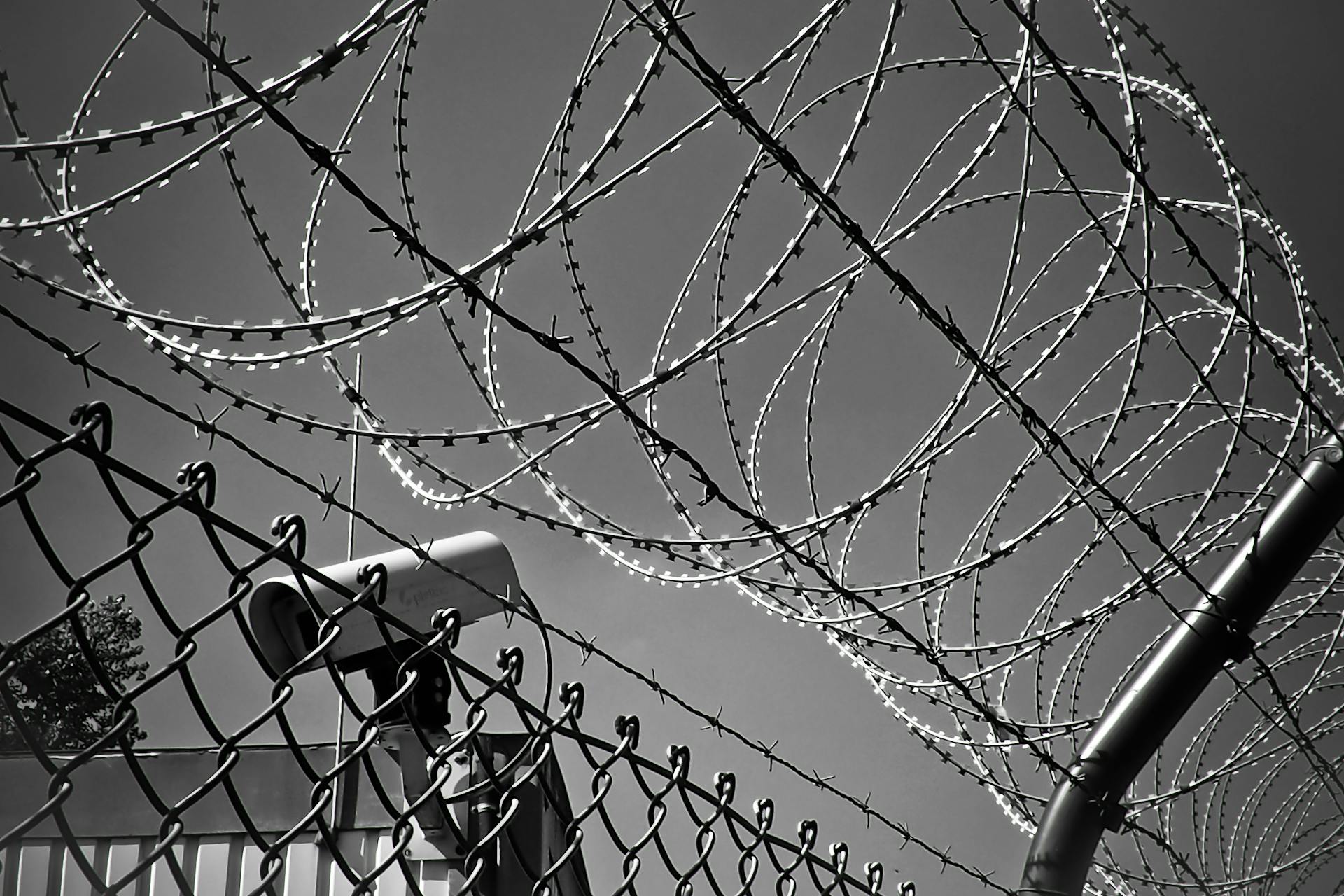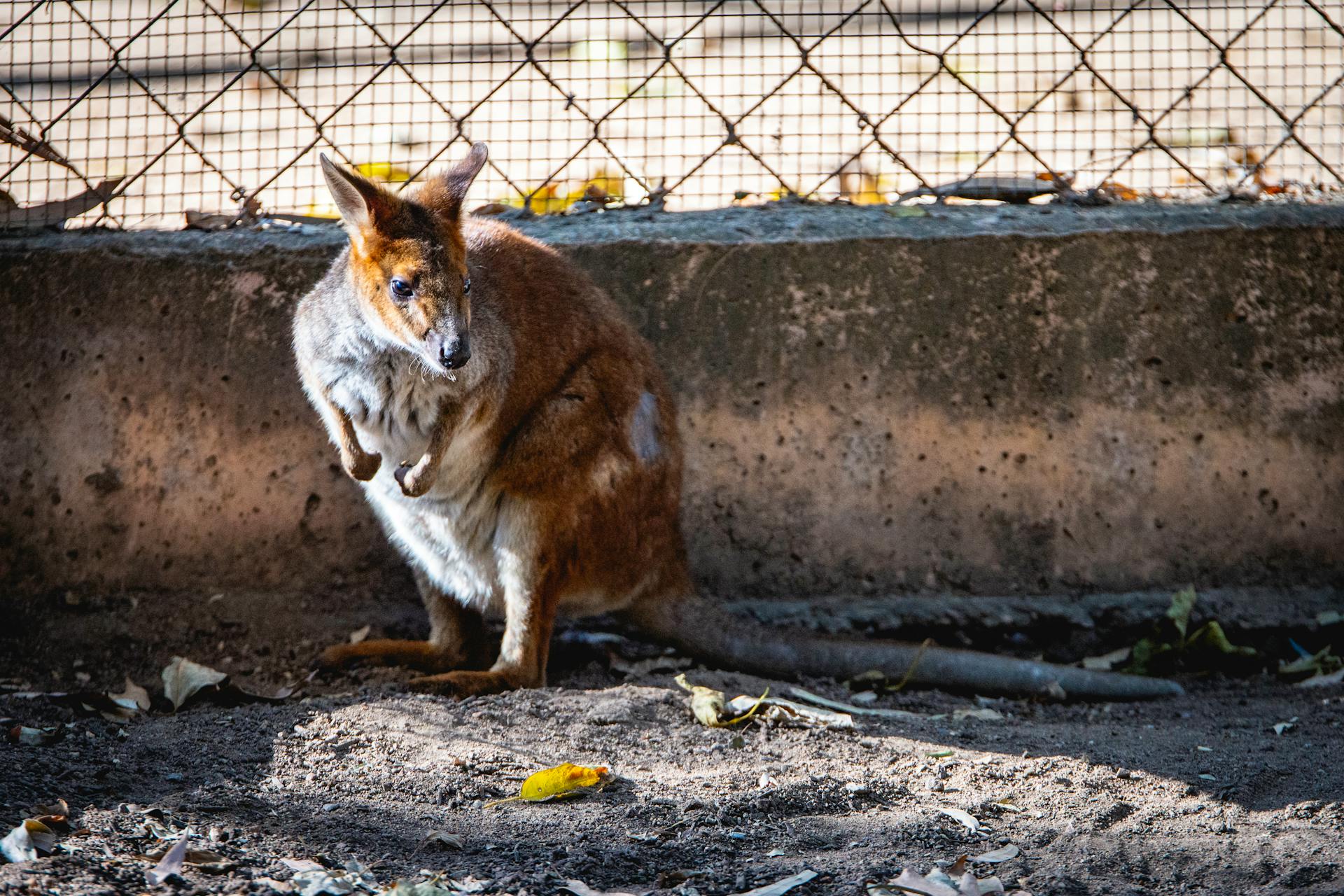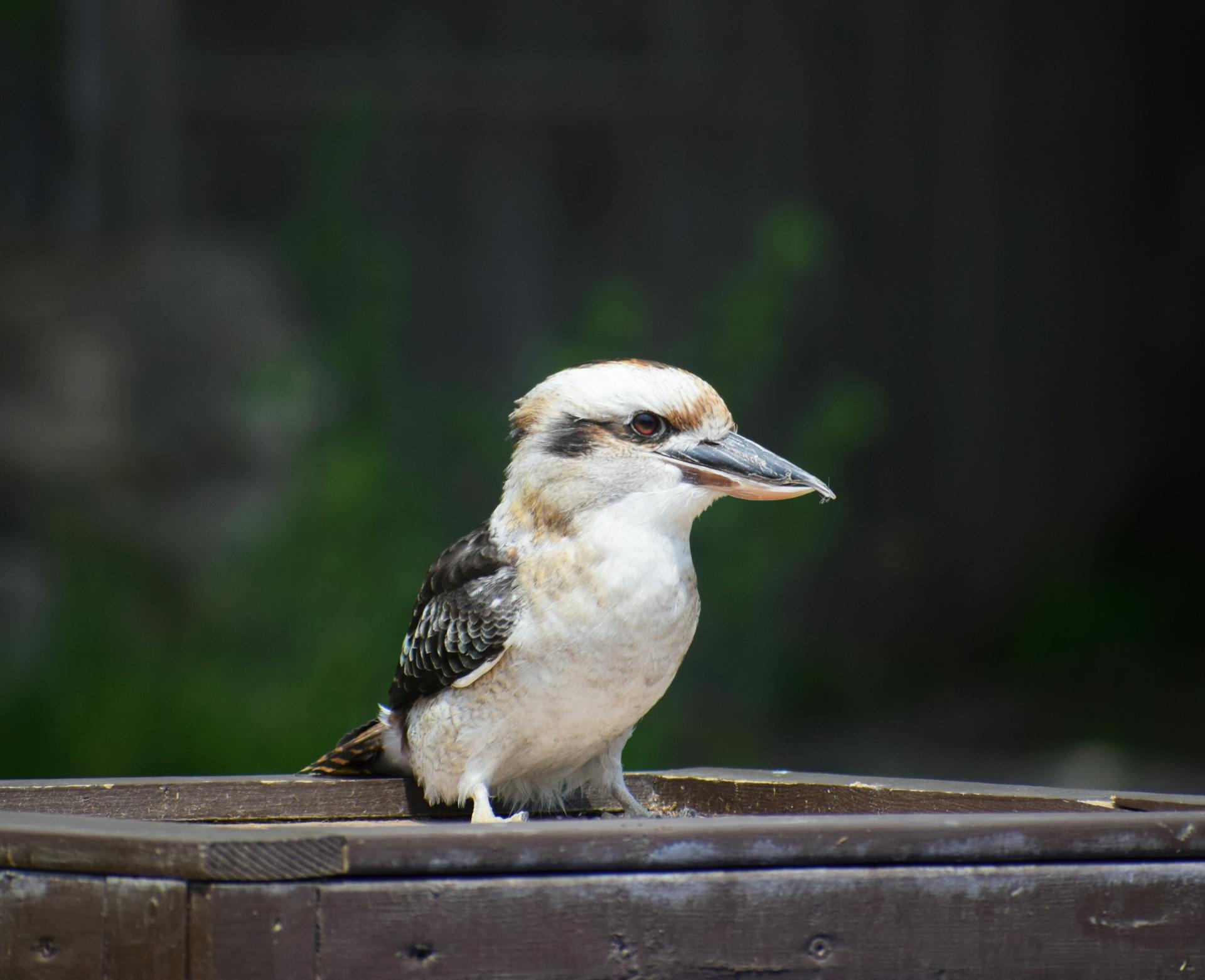
The Australian Dingo Fence is a remarkable structure that stretches over 5,600 kilometers across the Outback. It's a vital barrier that protects livestock and landscapes from the threat of dingoes.
The fence was built to keep dingoes out of the eastern parts of Australia, where they can cause significant damage to sheep and cattle. This is crucial for the country's agricultural industry, which relies heavily on these animals for food and income.
The fence is also designed to protect the unique and fragile ecosystems of the Outback, which are home to many endangered species. By keeping dingoes out, the fence helps to preserve the natural balance of these environments.
Stretching from the coast of South Australia to the Gulf of Carpentaria in the north, the fence is an engineering marvel that has stood the test of time.
History of the Fence
The Australian dingo fence has a rich history that spans over a century.
In the 1860s and 1870s, introduced rabbit populations began to spread rapidly across southern Australia, prompting the creation of pest exclusion fences.
The earliest of these fences were designed to protect small plots of cropland from marsupial predation.
By 1884, a rabbit-proof fence was built, but it proved unsuccessful at keeping rabbits out and more successful at keeping out other animals like pigs, kangaroos, and brumbies.
In the 1930s, an estimated 32,000 km of dog netting was being used on top of rabbit fences in Queensland alone.
Prior to 1948, the idea of a Dingo Barrier Fence Scheme had not been implemented as a statewide project with annual maintenance and repair.
Government funds were used to heighten and expand the fence, but it wasn't until 1948 that the Dingo Barrier Fence Scheme became a statewide project.
Laws were introduced in 1946 to protect the fence, with penalties of three months for leaving a crossing gate open and six months for damage or removal of part of the fence.
These penalties are still in use today, highlighting the importance of the fence in protecting the environment.
See what others are reading: Rabbit Jump
Design and Impact
The Australian Dingo Fence is a remarkable feat of engineering that has a significant impact on the country's ecosystem. It stretches for over 5,600 kilometers.
Built in the 1880s, the fence was designed to keep dingoes out of the southeastern regions of Australia. The dingo population in these areas was a threat to livestock, and the government saw the fence as a way to protect the economy.
The fence is made of sturdy materials, including steel posts and wire mesh, and is designed to be impenetrable to dingoes. It's a testament to human ingenuity and the desire to preserve the natural balance of the environment.
Physical Design
The Dingo Fence's physical design is quite impressive, with some sections reaching as high as 180-centimetre (6 ft) wire mesh. This helps to keep dingoes out of certain areas.
The fence is cleared on both sides to a width of 5 m (5.5 yd; 16 ft), which allows for easy maintenance and inspection. This is crucial for the fence's overall effectiveness.

In some parts of South Australia, the fence is made of multi-strand electric fencing, adding an extra layer of protection against dingoes. This is a more robust option compared to traditional wire mesh.
The fence is also equipped with lighting, using 86 mm (3.4 in) cold cathode fluorescent lamps that alternate between red and white. These lamps are powered by long-life batteries charged by photovoltaic cells during the day.
Maintenance of the fence is managed by a team of 13 staff on the NSW side, who inspect and maintain portions of the fence between 60km and 100km every Monday and Friday. They are paid between $26 and $31 an hour.
Environmental Impact
The dingo fence has a profound impact on the environment, particularly in the Strzelecki Desert. It's estimated that the fence has reduced the populations of native animals like kangaroos and emus.
Ecologists believe the fence is more harmful than helpful, as it prevents dingoes from playing their role in maintaining the balance of nature. Dr. Mike Letnic of the University of New South Wales found reduced biodiversity in areas where dingoes were excluded.
The exclusion of dingoes has allowed for increased pasture competition from rabbits, kangaroos, and emus. This has led to changes in vegetation growth, with drone and satellite technology illustrating the effects of removing dingos.
Dr. Tom Newsome, a researcher at the University of Sydney's global ecology lab, stated that removing dingos has negative effects on the ecosystem, including more herbivores, invasive predators, and localized extinctions.
Satellite images have shown the stark effect kangaroo grazing has on the landscape, where dingoes are rare. The dead vegetation fraction, which includes dry leaves and twigs, is a reliable indicator of vegetation cover, particularly in the desert.
Ground surveys have supported the findings from satellite images, with repeated nighttime counts of kangaroos and dingoes seen with powerful spotlights. The results from satellite images were consistent with ground surveys and plots that were fenced off to observe vegetation changes.
What to Do
We need to discuss how to safely return dingoes to landscapes. Allowing dingoes to return will reduce kangaroo numbers and increase grass growth.
Conservationists, farmers, and land managers must find a balance between restoring ecosystems and protecting farms. This balance is crucial to avoid devastating sheep farming.
The fence has been in place for a long time, and it's not a simple decision to tear it down. We need to consider the consequences of reintroducing dingoes to the landscape.
Restoring ecosystems is essential for biodiversity benefits, but it's also important to protect the livelihoods of farmers. We must weigh the pros and cons carefully before making a decision.
The Fence in Action
The Australian Dingo Fence is over 5,614 kilometers long, stretching from the coast of South Australia to the Gulf of Carpentaria in Queensland.
It's a massive undertaking that has required significant resources and manpower to build and maintain. The fence is made of various materials, including steel, wood, and wire mesh.
Its primary purpose is to keep dingoes out of certain areas, particularly agricultural lands and water sources.
Life on the Fence
The fence can be a literal or metaphorical boundary between two spaces, like the 3-foot high fence separating the public and private areas of a beach.
It's often used to mark property lines, as seen in the 4-foot high wooden fence surrounding a residential backyard.
Living on the fence can be a delicate balancing act, as it requires respecting the boundaries of others while still accessing shared spaces.
In areas with shared ownership, like condominiums, fences are used to define individual units and common areas, such as the 2-inch thick metal fence separating a condo unit from the shared hallway.
A fence can also be a physical barrier to protect against wildlife, like the 6-foot high deer fence surrounding a community garden.
In some cases, fences can even be a source of conflict between neighbors, as seen in the dispute over a 5-foot high fence that was erected without permission.
Gallery
The Dingo Barrier Fence is a remarkable feat of engineering that stretches across the Australian outback. It's over 5,600 kilometers long and was built to protect livestock from dingoes.
One of the most striking features of the fence is its ability to withstand harsh weather conditions. As seen in the photo of the fence near Coober Pedy, South Australia, it can withstand extreme temperatures and winds.
The fence also features cattle grids to prevent dingoes from crossing. These grids can be seen in the photo of the fence near Bell, Queensland, where the sign on the gate warns stock to be careful when crossing.
Interestingly, the fence is not just a physical barrier, but also a psychological one. By creating a sense of confinement, it helps to keep dingoes from wandering into areas where they're not wanted.
Here are some key statistics about the Dingo Barrier Fence:
The fence's effectiveness can be seen in the photos of the dingo barrier fence crossing near Bell, Queensland, where the fence's presence is clear.
Frequently Asked Questions
Is there still a dingo fence in Australia?
Yes, the dingo fence is still present in Australia, stretching over 5,614 kilometers from Queensland to South Australia. Its vast length traverses diverse landscapes and traditional lands of 23 language groups.
Is The Dingo Fence longer than the Great Wall of China?
The Dingo Fence is actually longer than the Great Wall of China, stretching about 5,600 km. It's three times as long as the famous wall, making it one of the world's longest structures.
Which is longer rabbit proof fence or dingo fence?
The Dingo Fence in Australia is longer than the Rabbit-proof fence, measuring 5,614 km compared to 3,253 km. This makes the Dingo Fence the longest fence in the world.
How much does the dingoes fence cost in Australia?
The Dingo Fence costs approximately $750,000 per year to maintain. This significant annual expense is a testament to the ongoing efforts to protect Australia's unique wildlife.
Sources
- https://www.farmonline.com.au/story/3297511/life-on-the-dingo-fence/
- https://en.wikipedia.org/wiki/Dingo_Fence
- https://www.theguardian.com/australia-news/2021/feb/24/australias-dingo-fence-from-space-satellite-images-reveal-its-effects-on-landscape
- https://www.space.com/dingo-fence-from-space-satellite-images
- https://daily.jstor.org/the-unexpected-result-of-australias-dingo-fence/
Featured Images: pexels.com


